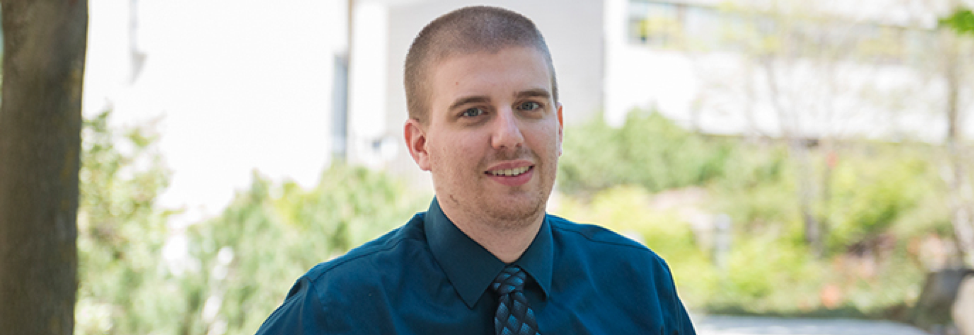A Look At Life Outside The Lab For One Student
June 10, 2016

When Jean-Guy Belliveau, PhD Candidate, is on the ice, time stops.
“When I referee hockey the world doesn’t exist anymore,” said Belliveau. “I drop the puck and the next thing I remember is the game ending, my instincts take over.”
The hockey rink is where this young researcher escapes to when he needs time off from studying the effects of radiation therapy.
Working under the supervision of Ravi Menon, PhD, and Dr. Glenn Bauman, Belliveau is using cutting-edge technology to examine what happens to normal brain tissue when it comes into contact with radiation.
“There is a lot of research to be done as to what happens to normal living tissue after we’ve delivered radiation to the brain,” he explained.
According to Belliveau, microbleeds can occur after treatment and may lead to strokes. But there is also a more serious threat – radiation necrosis, a build-up of dead tissue in an area of the brain.
“Once there is radiation necrosis it’s too late, the tissue is dead,” he said. “By using the MRI scanners at Robarts, we are actually able to predict necrosis before it happens by about four to eight weeks.”
This is done using a coefficient known as the R2* measurement. Clinicians will be able to better manage treatments for radiation necrosis by monitoring a patient’s R2* to ensure action is taken before necrosis sets in.
Additionally, Belliveau is using the high-performance MRI scanners to develop techniques that will allow living tissue to be imaged.
“Using the ultra-high fields we can do in vivo imaging at the necessary resolution,” he said. “This enables us to study one animal model over the course of its life, instead of using different models at various stages of progression to establish a pseudo-lifespan.”
Belliveau grew up in an Acadian French community in Nova Scotia and only began to use English when he moved to British Columbia for his undergraduate studies. This means that all of his high-level research has been done in his second language.
It was because of his bilingual proficiency that he was presented with the Richard J. Schmeelk Scholarship in 2015. This is an award given to French-speaking Canadians studying at either Western or the University of Calgary, and to English-speaking Canadians studying at Laval or the Université de Montréal.
The next stage in Belliveau’s journey hinges on completing a two-year clinical residency in order to become a licensed medical physicist. Individuals in that role are involved with a lot of behind-the-scenes aspects in the clinic, such as validating treatment plans for cancer patients and making sure equipment is running smoothly.
“Medical physicists have clinical responsibilities, but they are also still involved with research,” he said. “That’s intriguing to me because I’m able to work in the clinic, but can stay involved with research, which is important to me.”





